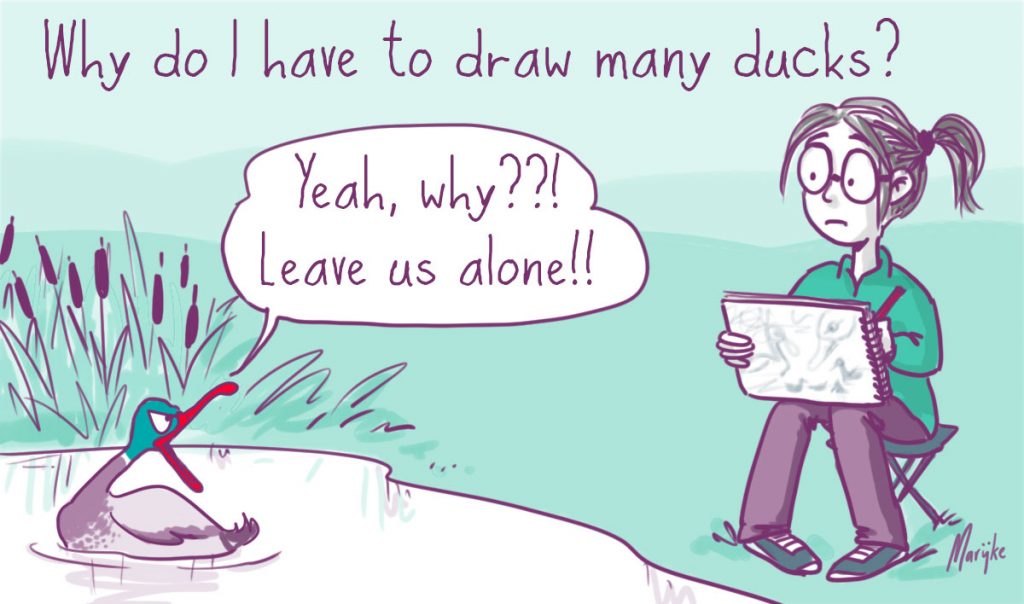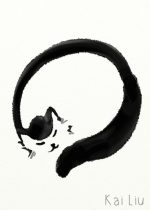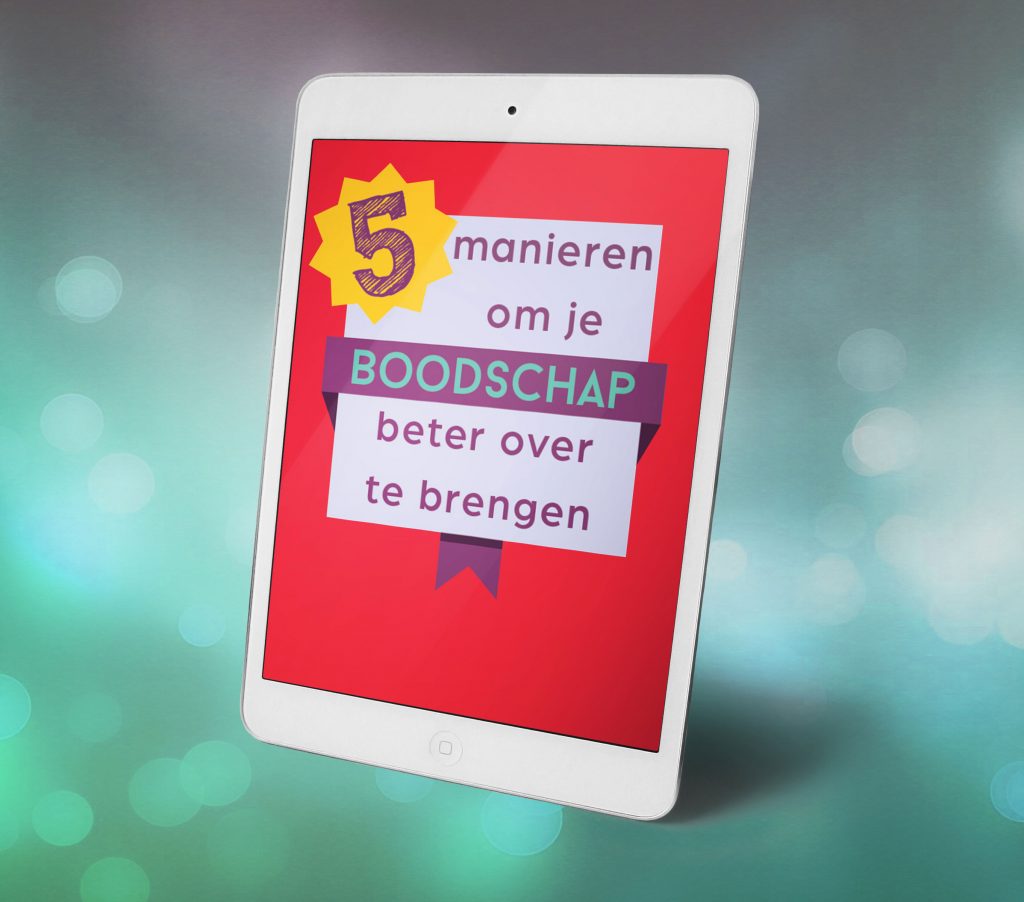For The English Text scroll down
Lijn = eend
Vooral Japanners zijn er goed in: ze trekken één gebogen lijn en je ziet meteen de eendigste eend of de kattigste kat die je je kunt voorstellen. Geen twijfel mogelijk: die grijze, ietwat wollige lijn IS een eend (of een kat).
Daar is een verhaal over. Een man wil een tekening van een eend. Na maanden overhandigt de tekenaar hem één lijn die zonder enige twijfel een bijzonder eendige eend voorstelt. ‘Wat?’ roept zijn klant (in het Japans). ‘Moest dat zo lang duren? Eén streep? En wil je daarvoor betaald worden?’
De kunstenaar glimlacht vriendelijk en zegt: ‘Voordat ik deze éne lijn kon trekken, heb ik talloze eenden moeten tekenen.’
Eenvoudig is moeilijk
Om een tekening of een animatie compact en eenvoudig te houden, heb je veel ervaring nodig. Om dan óók nog snel te kunnen werken, heb je nóg meer ervaring nodig. Die ervaring kun je zien als de ‘talloze eenden’ die ik heb moeten tekenen om dat te bereiken. Daardoor lijkt het nu vaak alsof ik de tekeningen uit mijn mouw schud. Maar juist de eenvoudigste cartoons en de kortste animaties vergen heel wat tijd, moeite en voorschetsen.Eendenperspectief
Gelukkig begrijpen mijn klanten dat. Ik kom maar héél zelden iemand tegen die roept: ‘Wat?’ (Gelukkig niet in het Japans, ik zou niet weten hoe dat klinkt.) Maar als ik uitleg hoeveel ‘eenden’ ik heb moeten tekenen om snel en trefzeker zijn of haar boodschap vorm te geven, verdwijnt het onbegrip. Dan ziet de klant hoeveel ‘eenden’ ik heb moeten tekenen om te komen waar ik nu ben: in het hoofd en het hart van de klant, met mijn tekenmaterialen.
And now in English!
Line = duck
The Japanese are especially good at it: they draw a single curved line, and you immediately see the duckiest duck or the cattiest cat you can imagine. There’s no doubt: that grey, somewhat woolly line IS a duck (or a cat).
There’s a story about this. A man wants a drawing of a duck. Months later, the artist presents him with a single line that represents, without any doubt, an extremely ducky duck. ‘What?’ the client exclaims (in Japanese). ‘Did this have to take such a long time? One line? And you want to get paid for that?’
The artist smiles kindly and replies: ‘Before I could produce this single line, I had to draw countless ducks.’
Simple is difficult
To keep a drawing or an animation simple, you need lots of experience. And to work fast as well, you need even more experience. You can liken this experience to the ‘countless ducks’ I had to draw to get there. That’s why it often looksas though I simply pull my cartoons out of my hat. But especially the simplest drawings and the shortest animations cost a lot of time, effort and trial.Duck perspective
Luckily my clients understand this. I seldomly encounter somebody who exclaims: ‘What?’ (fortunately not in Japanese, I wouldn’t understand.) But when I explain to them how many ‘ducks’ I had to draw to be able to express their message swiftly and surely, their misunderstanding vanishes. Then the client sees how many ‘ducks’ I had to draw in order to get where I am now: in the head and the heart of my clients, together with my drawing materials.




